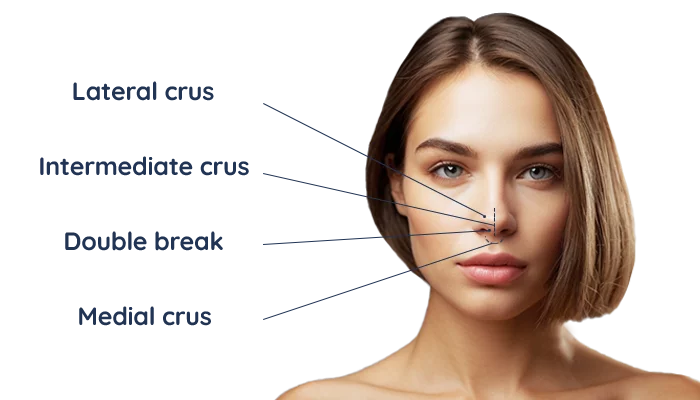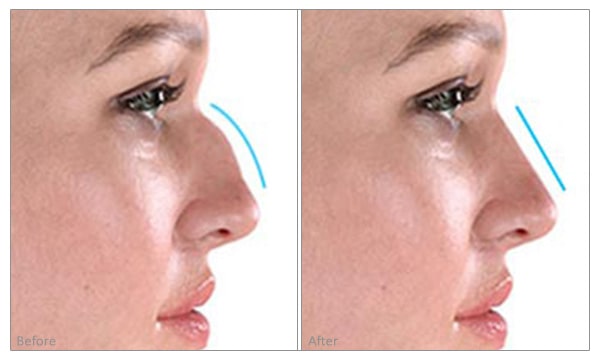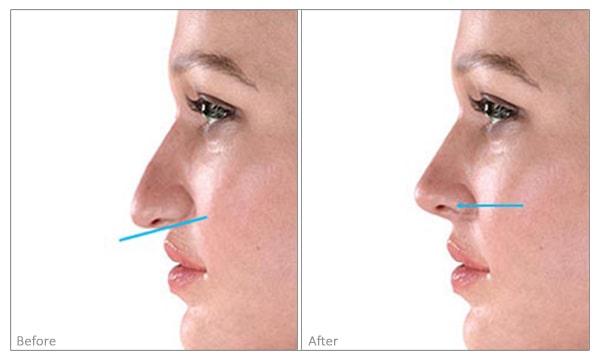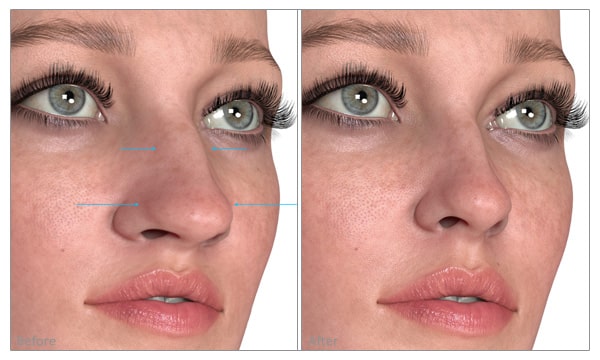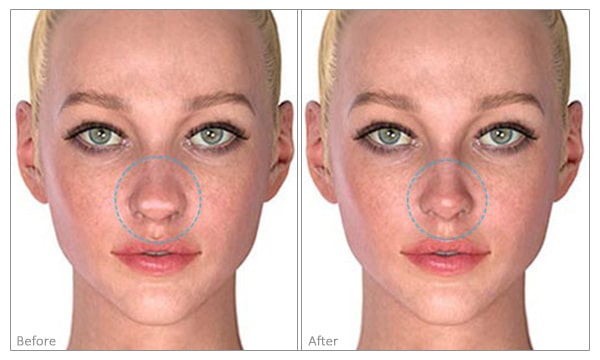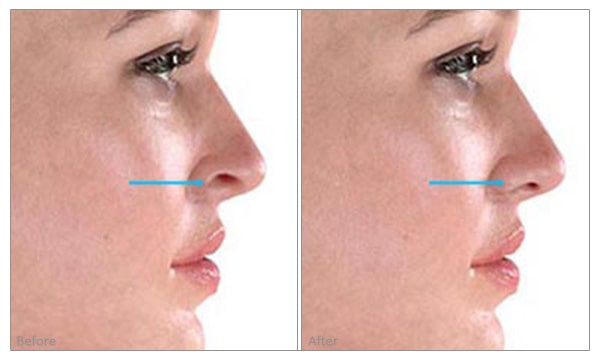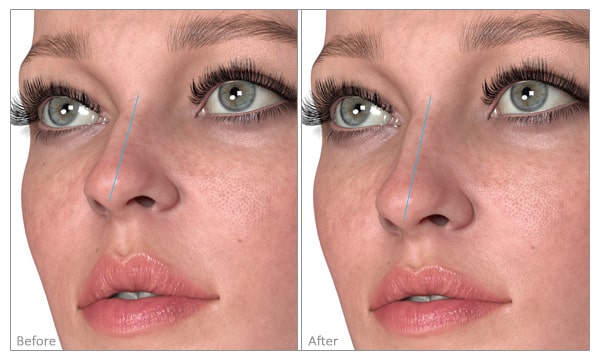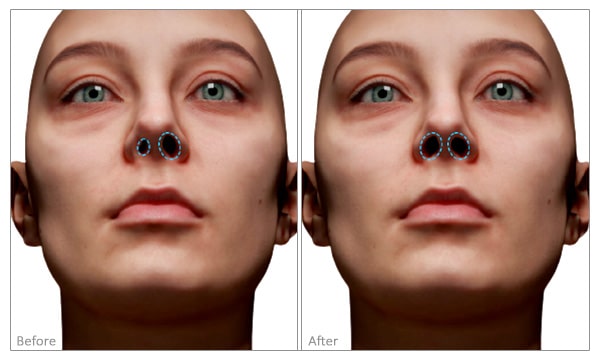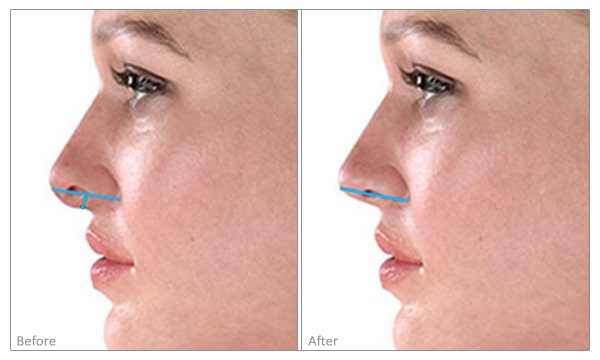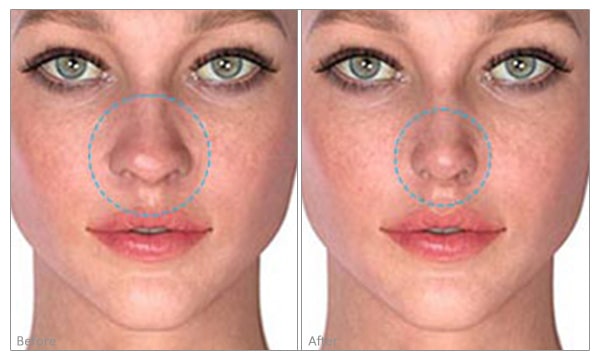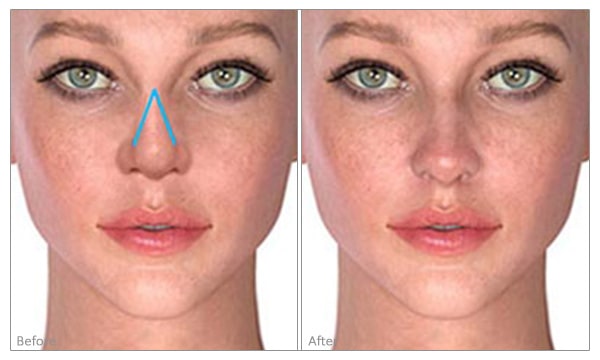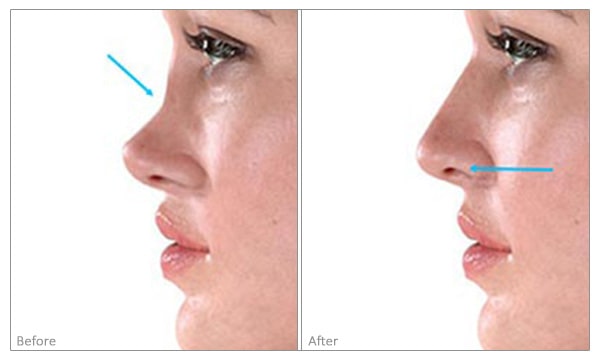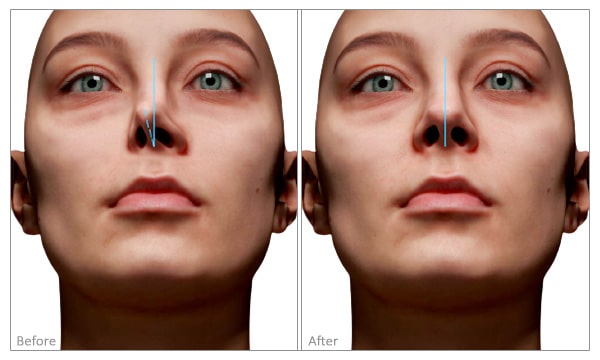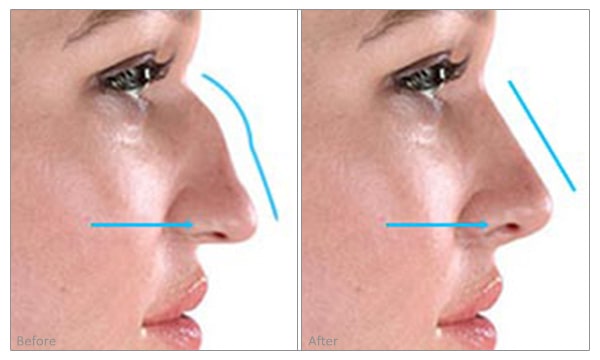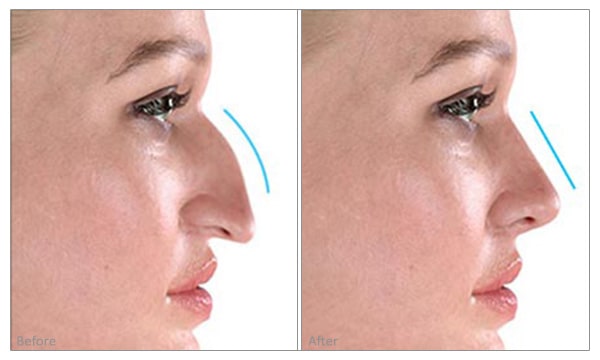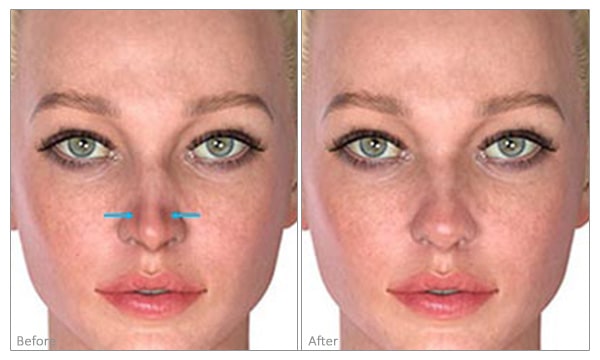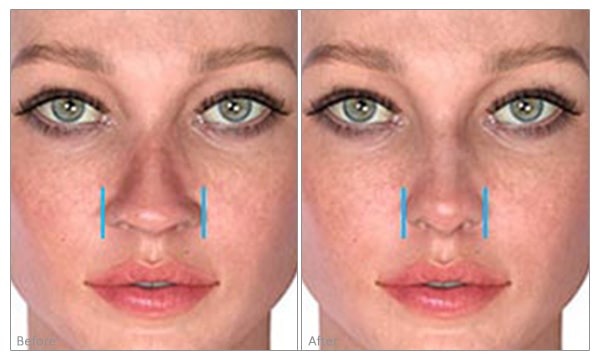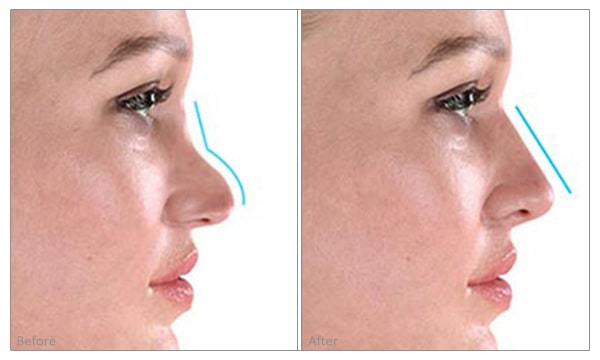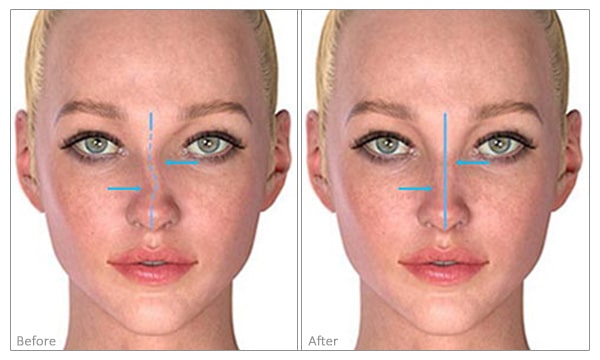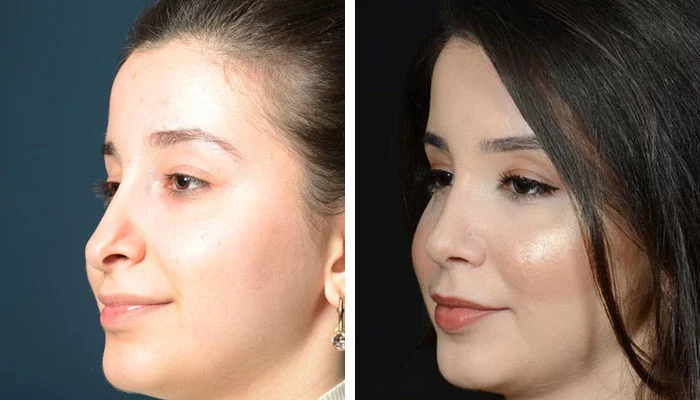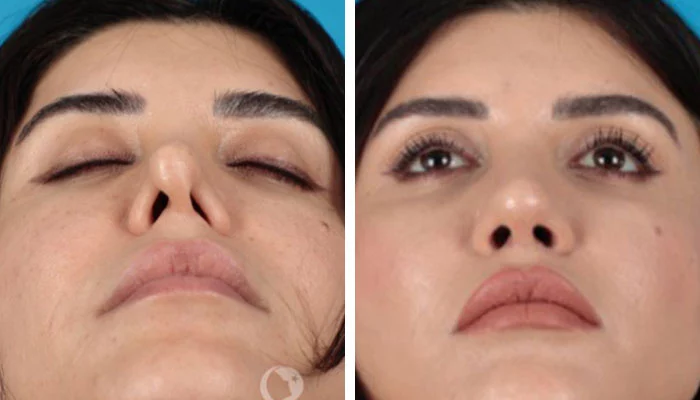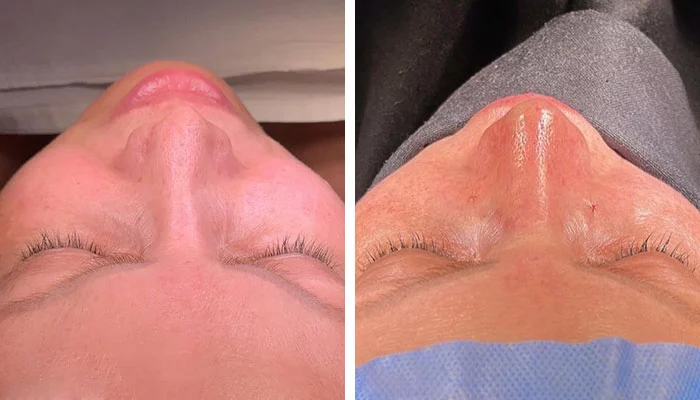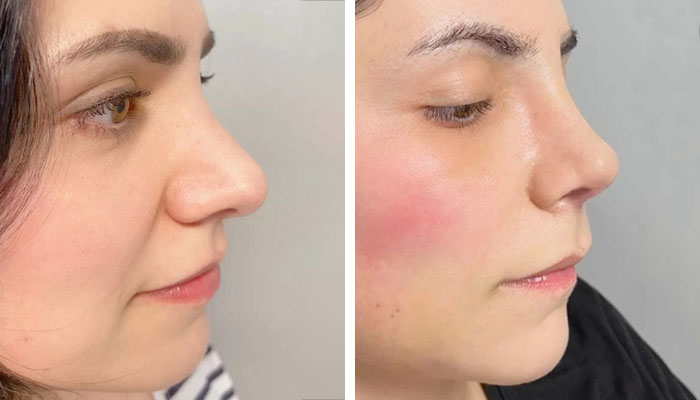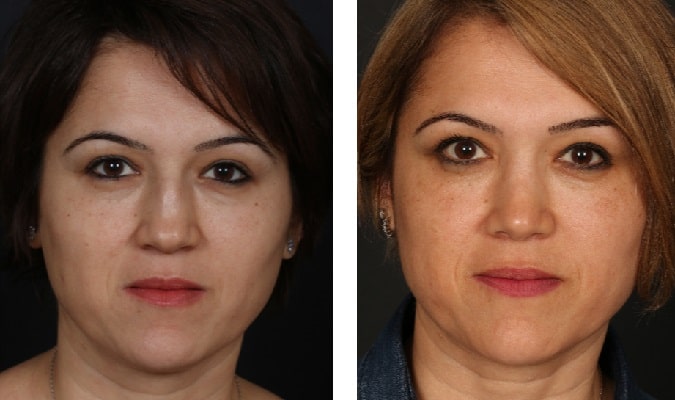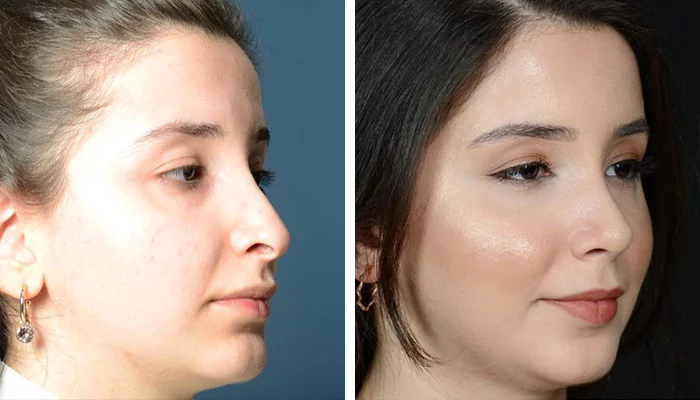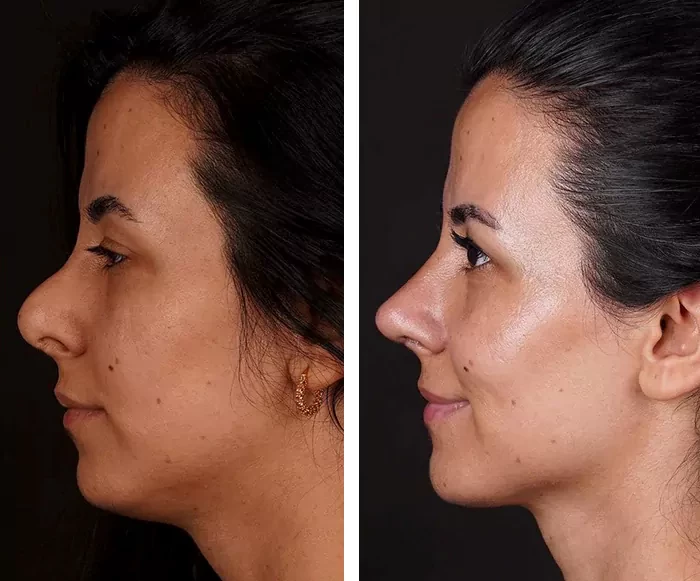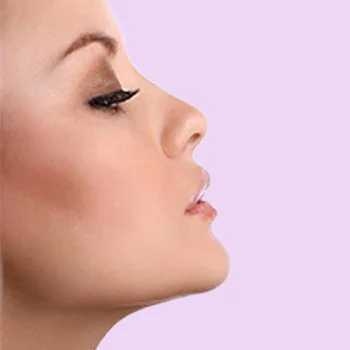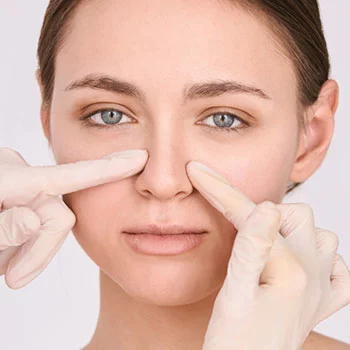What Is Revision Rhinoplasty?
Revision rhinoplasty, also known as secondary rhinoplasty, refers to the nose surgery performed on a patient who’s already gone through one or more rhinoplasties. It is often performed to fix the undesired results of the previous procedures both regarding the appearance and the function.
Why Revision Rhinoplasty?
As implied by the name, a revision rhinoplasty can be done to revise and improve the nasal flaws and imperfections a prior rhinoplasty failed to fix or were caused by the rhinoplasty itself or even an injury after having the procedure. A revision rhinoplasty could be done to address both aesthetic concerns in the shape and look of the nose and also the functional issues such as breathing issues.
What Can Revision Rhinoplasty Do?
The issues addressed in a revision rhinoplasty often include breathing problems, deviated septum, sinus issues, sleep apnea, snoring, over-rotated tip, nasal valve collapse, nostril asymmetry, wide nose, crooked nose, long nose, pollybeak, nose bumps, collapsed bridge, nasal collapse, and deformity.
Who's a Good Candidate?
Anyone dissatisfied with their primary procedure results can be a candidate for a revision rhinoplasty as long as they have waited at least one year after their primary surgery, have generally good health, realistic expectations, and strong reasonable motivations which could be determined after consultation with an experienced doctor. A thorough examination and consultation with your specialist can help you decide if you’re a good candidate. The following are a number of medical conditions that may complicate your rhinoplasty procedure and make you unfit for this procedure. Depending on your health condition and medical history, your doctor may decide to carry out the procedure under special care or ask you to postpone or even cancel it.
- Bleeding disorders
- Diabetes
- High cholesterol
- High blood pressure
- Heart disease
- Lung disease
- Severe allergies
- Heavy smoking and/or drinking habits
- Pregnancy
Who Isn’t a Good Candidate?
Generally, candidates who have made a hasty decision out of obsession and emotional drama over a minor or non-existent imperfection and have unrealistic expectations without considering the surgery’s risks, complications, and downtime, those who haven’t taken the time for their previous rhinoplasty results to show up, and those with specific diseases are not good candidates for a revision rhinoplasty as it can pose risks to their health.
What to Do Before Revision Rhinoplasty?
You need to consider some factors before having a revision rhinoplasty
Wait Until You’re Fully Healed
It is very important to wait until your nose is fully healed. Your nose continues to change until one year after rhinoplasty when the swelling disappears and the final outcome shows up. During this time you may experience changes in the look or the function of your nose. What appears to be an issue a few weeks after your procedure may not remain a problem months later, or the opposite, some aspects may seem fine at the beginning but issues may develop later on the recovery journey and you may wish to change them. Therefore, premature surgery can not properly address your concerns. You need to wait at least one year before deciding on revision rhinoplasty.
Consult an Expert Before Considering a Revision Rhinoplasty
Make sure you ask for an expert opinion before undergoing a secondary rhinoplasty. An experienced surgeon can assess how a revision procedure can help you. Considering revision rhinoplasty usually depends on:
- How dissatisfied the patient is with the results of their first rhinoplasty
- How much of the nasal septum has been removed in the first procedure
- The nose skin and the condition of the nasal airway
Choose an Experienced Board-certified Surgeon
Due to the challenges and limitations of revision rhinoplasty, it is a more complicated procedure compared to a primary one. Although the patient must have realistic expectations from the procedure, choosing a skilled board-certified plastic surgeon or ENT specialist who has enough experience with complex revision cases could contribute to a more successful procedure.
How Is Revision Rhinoplasty Done?
Revision surgeries are usually more complicated procedures than the primary ones, considering the fact that fixing damages caused by a prior manipulation that has left scar tissue and a weakened nasal architecture could be more challenging. In many revision rhinoplasties, there may be a lack of support tissue which makes it more difficult to reshape the nose and grafting may be required. However, simpler procedures may only include removing excess tissue and cartilage and changes in the bone by breaking, repositioning, and removing bone to fix an issue such as a crooked nasal bridge. Just like primary rhinoplasty, revision surgery is performed under general anesthesia. However, occasionally, the procedure may be done under sedation and local anesthesia. Depending on the case and what changes the surgery is going to include, an open or closed method will be used to carry out the rhinoplasty. However, as open rhinoplasty provides better access and control to reform and correct the internal structure including cartilage, bone, and other delicate tissue as well as the nasal bridge, tips, and nostrils, it is often used in revision surgeries.
Open rhinoplasty includes an incision in the columella, the space between the nostrils, allowing the skin to be lifted, in addition to interior incisions made inside the nose, all of which provide access for reshaping the nose in order to improve its appearance and also correcting the nasal issues such as obstructions in the airway.
Grafting
Grafting is a surgical procedure in which tissue is moved from one part of the body to another or from another individual/creature’s body to another. However, in some cases, a graft could be synthetic, made artificially.
An important goal in many revision rhinoplasty cases is to make up for the lost tissue to restore the structural support of the nose and repair its flaws. The surgeon must often resort to grafts, desirably the autogenous grafts, to rebuild the lost structure. An autograft or autogenous graft refers to the tissue taken from another site of the patient’s body and transplanted into another site where needed. These grafts are the most desirable type as they bring about the long-term result with the lowest risk of rejection and infection. The grafts used in rhinoplasty usually include cartilage, bone, and subcutaneous tissue.
Cartilage graft may be provided by the nasal septum in some rhinoplasty cases, however, there’s usually not enough tissue to support grafting in a revision rhinoplasty which is why the source of the cartilage graft in revision surgery is often ears and sometimes the ribs if a larger size is required.
Soft tissue irregularities could be made up by grafts harvested from temporalis fascia through an incision, above or back of the ear within the hairline. Occasionally, skin grafts may be required either to reopen a distorted and narrowed nasal airway.
Revision Rhinoplasty Scarring
Besides the surgeon's expertise in closing the wound and the recovery process, revision rhinoplasty scarring depends on the method used in the procedure. In case the open method is used, It can result in a small scar on the columella which usually becomes barely visible after proper healing. However, if the procedure is done through closed rhinoplasty, incisions are only made inside the nose which will not cause any scars on the external structure of the nose. In case of grafting from other sites of the body such as the ear, rib, and temporalis fascia, you can expect scar formation in the incision sites. However, the scars are usually small, well-hidden, and unnoticeable.
What Are the Risks and Side Effects?
Like any major surgery, revision rhinoplasty may pose some risks and complications. Some of the probable complications associated with this procedure include the following.
Bleeding: Bleeding during the procedure is one of the most common risks of rhinoplasty either a primary rhinoplasty or a revision one because the blood vessels in the surgical area will be affected. However, bleeding mainly stops as the procedure ends, and considerable post-surgery blood loss is rare.
Reaction to anesthesia: Reaction to anesthesia is probable but could be safely avoided if general anesthesia is performed by an expert anesthesiologist who considers the patient’s medical history and health condition.
Nasal obstruction: Nasal blockage is a probable risk that can be fixed as the surgeon reshapes the nose. The problem is usually solved by making changes to the septum or even reducing the overall size of the nose.
Infection: While quite rare, infections after rhinoplasty could be very dangerous and complicate the recovery procedure if not managed. Therefore, it is very important to let your surgeon know to take action for treating your infection as soon as you notice the symptoms. Excessive swelling, fever, odorous nasal discharge, or pain may be symptoms of an infection that must be reported to the doctor for immediate care.
What Is the Revision Rhinoplasty Recovery Like?
The recovery timeline for revision rhinoplasty can vary from one person to another. Generally, it lasts one to two weeks. While patients can go back to light normal activities in 2 days, they are often advised to stay away from work for about 7 to 10 days. Patients are also asked to limit their activities until 6 weeks. A splint is often placed on the patients’ noses after the revision rhinoplasty, which is usually removed about a week after the surgery. The swelling starts to subside after two weeks when patients get to see the initial result of their surgery. The final result of rhinoplasty takes about a year to reveal when the patient is fully healed and the swelling is completely gone.
How to Speed up the Recovery Process?
Patients will be instructed to get enough rest and follow certain instructions to facilitate their healing process after the revision rhinoplasty. Make sure you follow your doctor’s advice. The following are some general rules you need to follow to speed up your recovery. However, your doctor may provide you with more personalized details regarding your condition you will need to follow.
- Sleep on your back with your head elevated
Patients should not and will be strictly forbidden to sleep on their stomachs. Sleeping on your side may also come with an increase in swelling and bruising, and even the possibility of nose displacement. The safest sleeping position recommended after a rhinoplasty is to sleep on your back while you keep your head in a higher position than your body. Keeping your head elevated while sleeping should be practiced until 6 weeks after the surgery.
- Use cold compresses
Applying cold compresses on the swelling parts of the nose in the first 72 hours can help reduce swelling.
- Get enough rest
Your body needs the energy to recover and rest is a vital factor in healing and reducing inflammation. Make sure you get plenty of rest and quality sleep. Take all the time your body needs to heal and don’t rush anything.
- Follow a healthy diet
Your diet must include nutrition that helps with healing. Fresh fruits and vegetables are usually good sources. However, you may want to take supplements as well.
- Avoid touching and blowing your nose
The swelling of nasal tissues can lead to congestion, making you want to blow your nose. However, you must strictly refrain from blowing your nose, instead, you can use saline nasal sprays as instructed by your doctor to moisturize your nasal passages until the swelling subsides. You must also avoid touching your nose frequently or picking your nose.
- Don’t wear glasses
You can use contact lenses instead of your corrective eyeglasses as the pressure from lying glasses on your nose can increase swelling and bruising and even affect the shape of your nose. In case you’re allergic to contact lenses or can not wear them due to any other reason, ask your doctor about other alternatives. Post-surgical glasses specifically designed to be worn after rhinoplasty may be a good option for you.
- Don’t hesitate to ask for professional help
If any unusual symptom comes up, don’t hesitate to discuss it with your doctor and ask for help.
How Long Does It Take to See the Final Nose Job Result?
While patients can see the changes as the initial swelling and bruising diminish by the second week, the result continues to evolve. You can expect to see the final result about one year after your revision rhinoplasty when there’s no swelling.
Frequently Asked Questions
Is revision rhinoplasty painful?
The procedure is performed under general anesthesia. However, occasionally local anesthesia and sedation may be used. In either case, you won’t feel anything during the procedure. Mild pain and discomfort are normal after the procedure. But they could be managed using painkillers prescribed by your doctor.
When can I have a revision rhinoplasty?
Patients are usually advised to wait one year after their first procedure before undergoing a secondary rhinoplasty.
How long does it take to see the final results?
While the initial results start to show up after about two weeks, the final result takes months and even a year to reveal when you’re fully healed and the swelling is completely gone.
Will insurance cover my revision rhinoplasty?
Cosmetic rhinoplasty is usually not covered by insurance, however, if the procedure is performed to fix functional issues, it may be covered. You need to ask your insurance provider to make sure your concerns match the list of the issues they cover.
Should I go to the same surgeon who’s done my first rhinoplasty to do the revision procedure?
What matters is the surgeon’s expertise and experience in revision rhinoplasty and the fact that you discuss your expectations clearly to make sure the surgeon can fix what you’re complaining about. As long as you have confidence in your surgeon and have a mutual understanding of what is ahead of you, it is fine to go to any board-certified surgeon, be it your previous doctor or a new one.
Does revision rhinoplasty take longer to heal?
Yes, usually. Unless the changes are very limited, the revision rhinoplasty recovery could take longer as the scar tissue resulting from the primary surgery cause the swelling to subside more slowly.
When can I get back to work?
You can go back to work in 7 days, usually after the splint is removed. However, many patients are reluctant to be seen with swelling and bruising on their face, therefore, it would be safe to stay away from work for about two to three weeks so that you’re recovered and there’s no sign of the surgery. Please note that strenuous activities must be avoided for about 6 weeks.
How much does revision rhinoplasty cost?
While the cost greatly depends on factors like location, the surgeon’s expertise and reputation, and the hospital quality, it is normal for revision rhinoplasty to cost more than a primary one even up to two to three times higher considering the fact that a revision procedure is more complicated and delicate to handle and take much expertise and may even take longer in terms of the surgery time.
What medicines should I avoid before rhinoplasty?
Non-steroid anti-inflammatory drugs (NSAIDs) such as ibuprofen and aspirin as well as vitamin E must be avoided from two weeks before the surgery as their blood thinning effect can increase the risk of bleeding during the surgery. You must keep away from active and passive smoking for two weeks and drinking alcohol one week before the surgery to reduce the risk of complications during the recovery process.
What is the revision rhinoplasty age limit?
As soon as your nose has reached its full maturity, which means you’re about 16-17 years old, there is no specific age limit regarding rhinoplasty. However, because revision rhinoplasty is often done at least with a year interval from the first one, the youngest age to undergo a revision procedure could be about 17-18. There’s no age limit on the other side. Instead, your general health defines if you’re a good candidate for revision rhinoplasty. More physical examination may be necessary before the nose surgery for patients who are above 40 years old to make sure they’re able to handle the stress resulting from the surgery.
What kind of anesthesia is applied in a revision rhinoplasty?
Revision rhinoplasty is often done under general anesthesia, meaning the patient goes into a sleep-like state. However, in some cases, local anesthesia and sedation may be applied.
Will the revision rhinoplasty scars be visible?
Scars of rhinoplasty depend on the rhinoplasty method (closed or open), the surgeon's expertise in closing the incision, and the patient's post-operative care and recovery which could vary from one person to another. But generally, a closed rhinoplasty will not leave any scar as the incisions are made inside the nose. While open rhinoplasty includes a scar on the columella, if healed properly it is very unnoticeable. Note that a rhinoplasty needing grafting can also come with incisions on body parts besides the nose. However, such areas are often used carefully and the scar will be well-hidden.
Can I fly after revision rhinoplasty?
You’ll be advised to wait at least 5 days before you fly after undergoing rhinoplasty to minimize the risk of bleeding, swelling, and other complications. However, the longer you avoid flying, the better.
How should I sleep after rhinoplasty?
After rhinoplasty, you must avoid sleeping on your stomach and your side. You should sleep on your back with your head elevated.

